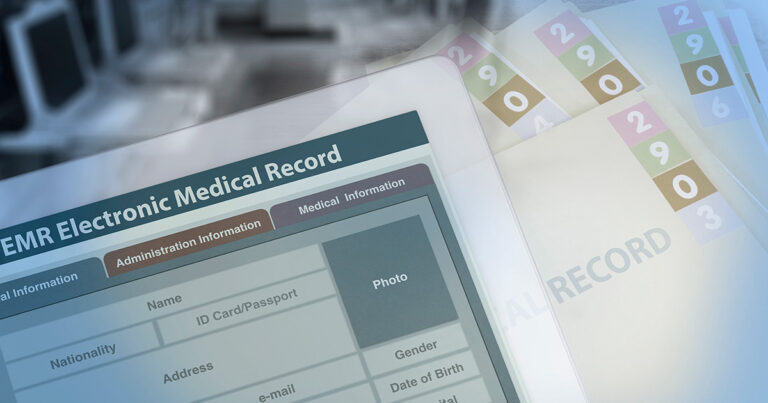What Every Healthcare Provider Should Know About MACRA
Most healthcare practices struggle to some extend with getting paid.
Studies show that over half of all hospital bills don’t get paid at all.
In an effort to simplify the problem, federal legislation was passed in an effort to overhaul the way that providers get paid in the U.S.
The bill was known as the Medical Access and Chip Reauthorization Act, or MACRA.
MACRA was set to go into effect in early 2017, but to date there has been no countrywide rollout. Not every clinic is participating in MACRA.
Part of the problem is that many practices are not aware of MACRA and what it could mean for their payment systems.
Those that do know of it don’t know how to start implementing it in their clinic. It’s a 2,400-page document with a lot of information.
Since 2017 is the first performance year for MACRA, it’s important that physicians and other healthcare providers are educated about the process.
Here’s a basic overview of MACRA and what it could mean for your practice.

What is MACRA?
MACRA is a Merit-Based Incentive Payment System that aims to change the way the U.S. evaluates and pays for healthcare.
The law includes new funding for technical assistance to providers, funding for measure development and testing.
It also enables new programs and requirements for data sharing, and establishes new federal advisory groups.
It consists of two payment structures:
- Merit-based Incentive Payment System (MIPS)
- Advanced Alternative Payment Models (APM)
MIPS guidelines will determine whether providers’ compensation for Medicare Part B reimbursements is adjusted up or down depending on performance.
The APM structure provides a new way for Medicare to compensate healthcare providers for the care they give to Medicare beneficiaries.
Most providers who participate in APMs will also be subject to MIPS, but will receive favorable scoring – with correspondingly higher reimbursement rates.
Most providers will default to the MIPS structure, but it will not apply to hospitals or facilities, who fall under the second structure, APM.
Other MIPS exemptions include:
- Physicians newly enrolled in the Medicare program
- Physicians with less than or equal to $10,000 in Medicare charges AND less than or equal to 100 Medicare patients annually
- Physicians who are already involved in an advanced APM through their hospital systems
The hope is at some point almost all providers will be reimbursed through these two mechanisms rather than a fee-for-service arrangement.
This will help reduce the number of payment losses and ensure that providers are fairly compensated for specific benefits.
What Does MACRA Mean for Healthcare Providers?
So what does this mean for your practice?
As of this year, MACRA is already in effect and can be used by any healthcare practice. But the ruling also gave clinics the ability to partially participate if desired.
But MACRA guidelines will also be implemented more strictly through 2022.
Here is a look at what parts of the law will take effect starting in 2019 for the merit-based implementation:
- 2019 – Providers subject to -4% to +4% base rate adjustment for Medicare Part B reimbursements
- 2020 – Providers subject to -5% to +5% adjustment
- 2021 – Providers subject to -7% to +7% adjustment
- 2022 and beyond – Providers subject to -9% to +9% adjustment
This means that healthcare providers will need to start looking into the financial implications of not participating fully with MACRA in 2017 and 2018.
Since the rollout will take place fully in 2019, providers and practitioners will need to start preparing for the financial changes that MACRA will bring.

How to Prepare Your Practice for MACRA
It’s important to recognize the fact that the changes in MACRA are coming sooner rather than later.
While it may be tempting to delay implementation until 2019, when MACRA takes full effect, the best course of action is to learn all you can now and to prepare your practice for these changes as soon as possible.
You want to ensure that MACRA will be successful in your unique environment.
You also want to make sure you’re aware of any rules or changes to the ruling that may impact MACRA and your financial situation.
Here are a few ways that you can prepare for MACRA.
1. Read the MACRA rules and know the timelines for implementation. MACRA is a 2,400 page document. While you won’t necessarily need to read all of it to be prepared, you should still know what it contains. CMS.gov has a full overview of the bill here.
2. Understand how performance and payments are measured. Performance measures will define how providers are evaluated and compensated for care.
Knowing how you compare and where to improve will help to avoid payment reductions when MACRA changes are put into place.
You may also want to:
- Participate in regional and/or national measure selection forums.
- Follow the National Quality Forum for MAP guidance. These recommendations are often embraced by CMS and may be used for MACRA. MAP will strongly influence what shows up in the rules.
3. Embrace change now, because MACRA will be around for a while. New information about patient outcomes and provider performance will be shared publically over the next few years.
It’s important to read up on this information when it comes out and learn how it will affect the way you are compensated.
It will also be important to talk to other healthcare providers about the changes MACRA will make. Successful implementation in your practice will be closely linked to success in other practices.
Early adoption will be key for successful MACRA implementation.
Because MACRA is so comprehensive and will impact every area of your payment system, it’s important that healthcare providers understand the implications now and start putting processes into place.
Many providers don’t take the time to implement new healthcare rulings until they absolutely have to, which is why many clinics are not yet participating in MACRA now.
But MACRA will be put into effect as some point, so it’s essential that providers do the research about this important change now rather than in 2018 or 2019.
Besides the CMS, AMA, and ACP websites, good resources are also available from specialty-specific and payer websites.
Here are 5 more key points providers should know about MACRA.
Conclusions
Don’t let MACRA surprise you when it goes into effect in 2019.
If you wait to understand the ruling and what it could mean for your practice, there will undoubtedly be a great deal of frustration about how to navigate in the new MACRA environment.
Practitioners and everyone within their practices should be well prepared before all the rules and guidelines are fully in place.
MACRA has the potential to transform the healthcare system, so the sooner you understand those implications and put a plan in place for them, the better results you will see.







